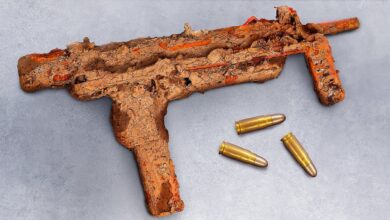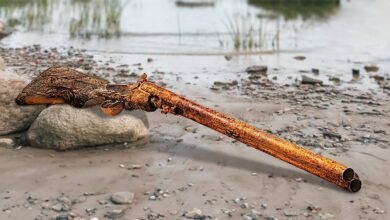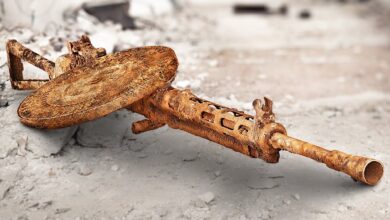K-98 Rifle Restoration: Breathing New Life into a Historic Piece
The Mauser Karabiner 98k, often referred to as the K-98, is one of the most iconic rifles in history. A product of Germany’s Mauser factory, the K-98 played a key role during World War II, and its design has left an indelible mark on military firearms that followed. Whether you are a collector, a history enthusiast, or someone interested in firearms restoration, restoring a K-98 rifle offers a rewarding challenge. In this article, we will explore the process of K-98 rifle restoration, from assessing the condition of the rifle to the final touches that make it look and function like new.
The History of the K-98
Before diving into the restoration process, it’s essential to understand the significance of the K-98 rifle. Introduced in 1935, the K-98 was the standard-issue bolt-action rifle for the German military during World War II. Known for its durability, accuracy, and robust design, the K-98 was chambered in 7.92x57mm Mauser, a potent round capable of engaging targets at long distances. The K-98 was used extensively during the war and saw action in many of the major campaigns, earning a reputation as a reliable and formidable weapon.
After the war, many K-98 rifles were decommissioned or captured by Allied forces. Over the decades, many of these rifles have found their way into civilian hands, either as collector’s items or as historical curios. Many of these rifles, however, have suffered from neglect or wear and tear. That’s where restoration comes in.
The Restoration Process
Restoring a K-98 is a meticulous process that requires attention to detail, a certain level of skill, and the right tools. Whether the rifle is in poor condition or simply showing signs of aging, a restoration project can breathe new life into this historic firearm.
1. Assessing the Rifle’s Condition
Before starting any restoration work, it’s crucial to assess the current condition of the rifle. The K-98, being a military surplus firearm, can range from being in near-mint condition to being heavily worn with rust, cracked wood, and missing parts. Common areas of concern for a K-98 rifle include:
-
Barrel Condition: Look for signs of rust, corrosion, and pitting inside and outside the barrel. A clean, smooth bore is essential for accuracy, and it may need to be polished or replaced if severely damaged.
-
Stock Condition: The stock on a K-98 is often the first part to show signs of damage. The wood may be cracked, warped, or missing pieces, and the finish may have worn off.
-
Metal Parts: Examine the metal components for rust, wear, or cracks. The bolt, receiver, trigger guard, and barrel bands should all be inspected closely.
-
Missing Parts: Many K-98s, especially surplus models, may have missing parts such as the cleaning rod, sling, or rear sight. These should be replaced to maintain authenticity.
2. Disassembly and Cleaning
Once you’ve assessed the rifle’s condition, it’s time to disassemble the K-98 for cleaning and restoration. Always follow safety procedures and ensure the rifle is unloaded before disassembling.
-
Remove the Stock and Metal Components: Carefully remove the stock from the metal components, taking note of any screws, pins, and springs that need to be removed. Keep track of small parts to avoid losing them.
-
Clean the Barrel: Use a cleaning rod, patches, and bore solvent to clean the barrel thoroughly. If the barrel is excessively corroded or pitted, it may require professional re-boring or replacement.
-
Dealing with Rust: If rust is present on the metal parts, it can often be removed using steel wool or abrasive pads. For more extensive rust, a rust remover or mild acid treatment may be needed, followed by a thorough cleaning and oiling.
-
Stock Cleaning and Repair: The wooden stock can be cleaned using a mild soap solution or a special wood cleaner. If there are cracks or gouges, wood filler or epoxy resin can be used to repair the damage. Sanding the stock to remove old finishes and applying a new protective finish will give it a fresh look while retaining the historic character.
3. Replacing Missing Parts
One of the most common challenges when restoring a K-98 is replacing missing or damaged parts. Finding authentic or reproduction parts for a K-98 can be difficult, but it is essential to maintain the historical integrity of the rifle. Some common parts that might need replacing include:
-
Barrel Bands and Sights: These parts often wear out or become damaged over time. Many reproduction parts are available, but be sure to choose parts that match the rifle’s production year and markings for authenticity.
-
Stock Components: If the stock is missing pieces such as the upper handguard or the cleaning rod, they can often be found from surplus suppliers or specialty manufacturers.
-
Small Springs and Pins: These components may wear out over time. If they are missing or damaged, they can usually be replaced with new ones.
4. Reassembly and Function Check
Once all the parts have been cleaned, repaired, or replaced, the next step is to reassemble the rifle. Carefully follow the reverse order of disassembly, making sure to torque screws properly and ensure all components fit securely.
-
Check the Bolt and Trigger Mechanism: Ensure that the bolt moves smoothly and locks into place. The trigger should be responsive without excessive play or creep.
-
Test the Safety and Action: Before firing the rifle, check the safety mechanism and dry fire the rifle to ensure that it operates correctly.
5. Finishing Touches
Restoring a K-98 isn’t just about functionality – it’s also about aesthetics. After completing the mechanical restoration, it’s time to add the finishing touches.
-
Bluing: Re-blueing the metal parts is a common step in restoring the rifle’s exterior. Bluing gives the rifle a fresh appearance while also protecting the metal from rust and corrosion.
-
Stock Refinishing: After sanding down the stock, a new coat of oil or wax can be applied to protect the wood and enhance its natural grain. Be sure to apply the finish sparingly and allow it to cure properly.
-
Markings and Proof Marks: If you’re looking for historical accuracy, take note of the rifle’s original markings and proof stamps. These should be carefully preserved or, if necessary, restored to their original appearance.
Conclusion
Restoring a K-98 rifle is a labor of love that requires patience, skill, and a deep appreciation for history. The process of returning a worn or damaged K-98 to its former glory is both challenging and rewarding. Whether you’re aiming to create a functioning collector’s piece or simply restore an old rifle to its original condition, the end result will be a testament to the craftsmanship of the Mauser engineers and the enduring legacy of this remarkable weapon.
By investing time and effort into a K-98 restoration project, you’re not just bringing a rifle back to life – you’re preserving a piece of history for future generations to appreciate and study.





